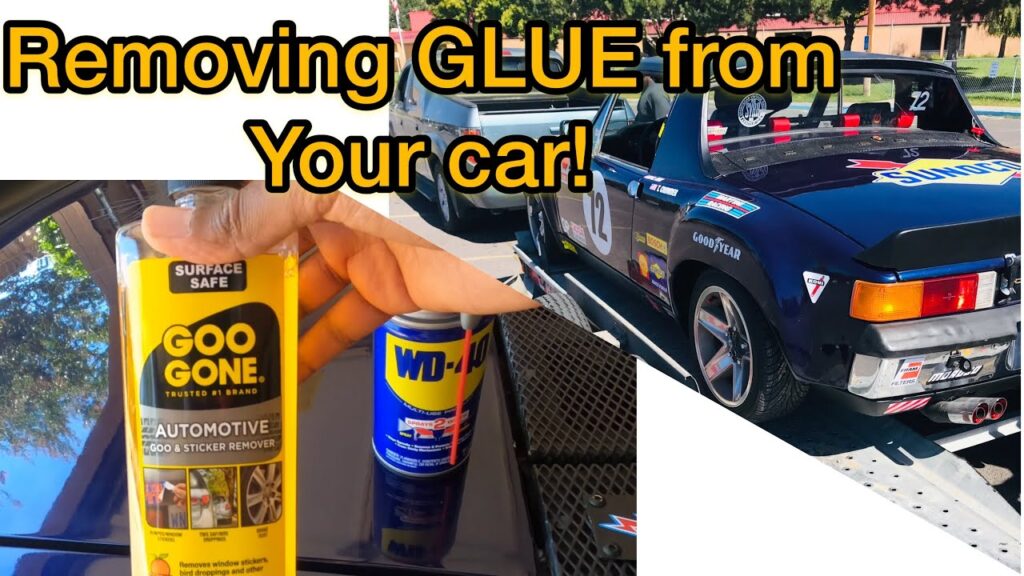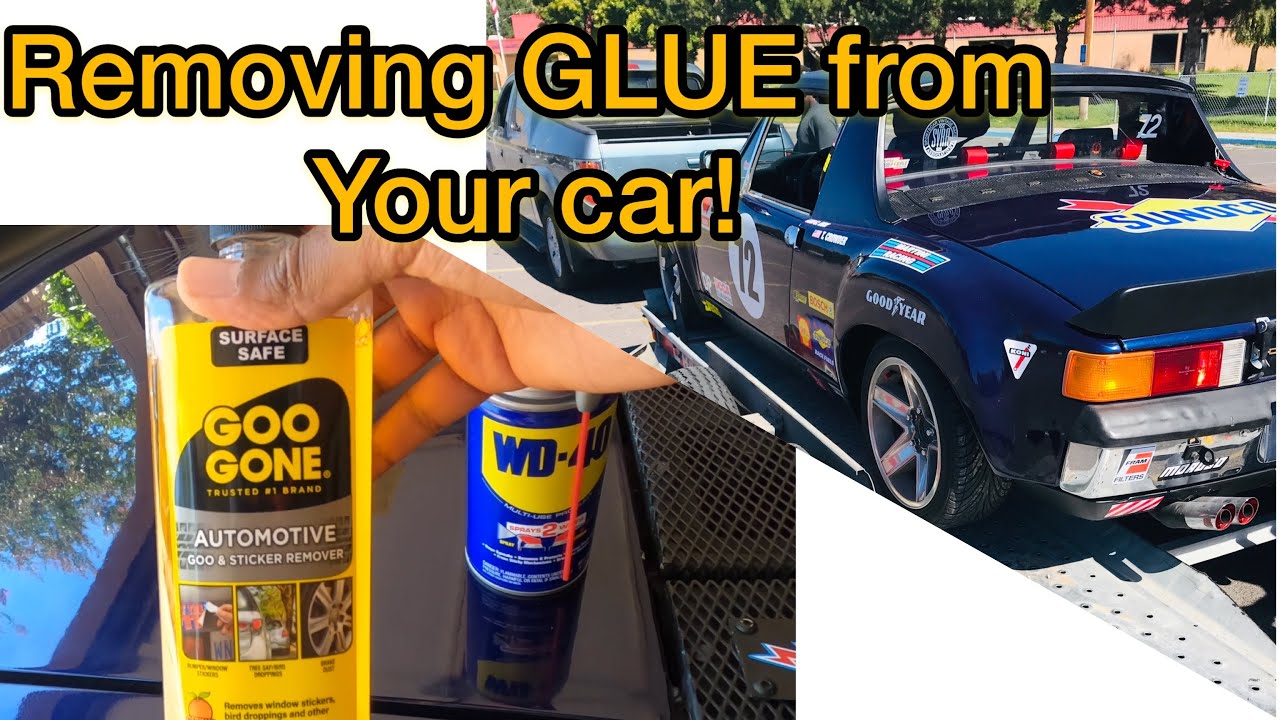
How to Take Adhesive Off Car Paint Without Damaging It
Discovering unwanted adhesive on your car’s paint can be frustrating. Whether it’s from old stickers, tape residue, or tree sap, removing it safely is crucial to avoid damaging the finish. This comprehensive guide provides effective methods and precautions on how to take adhesive off car paint, ensuring your vehicle remains pristine.
Understanding the Risks of Removing Adhesive
Before diving into the removal process, it’s important to understand the potential risks. Car paint is delicate and can easily be scratched, swirled, or even stripped if harsh chemicals or abrasive tools are used. The goal is to take adhesive off car paint gently, using methods that dissolve or loosen the adhesive without harming the underlying surface.
Essential Tools and Materials
Having the right tools and materials on hand is essential for a successful adhesive removal. Here’s what you’ll need:
- Microfiber Towels: Soft, lint-free towels are crucial for wiping and buffing.
- Plastic Scraper: A plastic scraper can help lift adhesive without scratching the paint.
- Heat Gun or Hair Dryer: Gentle heat can soften the adhesive, making it easier to remove.
- Adhesive Remover: Choose a product specifically designed for automotive paint.
- Detailing Spray: A detailing spray can help lubricate the surface and prevent scratches.
- Wash Mitt and Car Soap: For cleaning the area before and after adhesive removal.
- Clay Bar (Optional): For removing stubborn residue.
Step-by-Step Guide to Removing Adhesive
Follow these steps to safely take adhesive off car paint:
Step 1: Clean the Area
Start by washing the area around the adhesive with car soap and water. This removes any dirt or debris that could scratch the paint during the removal process. Rinse thoroughly and dry with a microfiber towel.
Step 2: Apply Heat (Optional)
If the adhesive is particularly stubborn, use a heat gun or hair dryer to gently warm the area. Hold the heat source a few inches away from the paint and move it in a sweeping motion. Avoid overheating, as this can damage the paint. The goal is to soften the adhesive, making it easier to lift. This helps to take adhesive off car paint more efficiently.
Step 3: Apply Adhesive Remover
Apply a small amount of automotive-specific adhesive remover to the affected area. Follow the manufacturer’s instructions carefully. Some removers require a few minutes to dwell before wiping. Always test the product in an inconspicuous area first to ensure it doesn’t damage the paint. This step is crucial to effectively take adhesive off car paint.
Step 4: Gently Scrape or Wipe
Using a plastic scraper or a microfiber towel, gently lift the adhesive. If using a scraper, hold it at a low angle to avoid scratching the paint. If using a towel, apply gentle pressure and wipe in one direction. Repeat as necessary until the adhesive is removed. The key is to be patient and avoid applying too much force. Consistent, gentle motions will help you take adhesive off car paint without harm.
Step 5: Clean and Polish
Once the adhesive is removed, clean the area again with car soap and water to remove any remaining residue from the adhesive remover. Dry with a clean microfiber towel. Follow up with a detailing spray or polish to restore the paint’s shine and protect it from future damage.
Alternative Methods for Removing Adhesive
If commercial adhesive removers aren’t available or you prefer a more natural approach, consider these alternatives:
Using WD-40
WD-40 is a versatile product that can effectively dissolve many types of adhesive. Spray a small amount onto the adhesive and let it sit for a few minutes before wiping it away. Be sure to wash the area thoroughly afterward to remove any WD-40 residue. Remember to always test in an inconspicuous area first. WD-40 can be a good option to take adhesive off car paint, but use it cautiously.
Using Isopropyl Alcohol
Isopropyl alcohol (rubbing alcohol) can also dissolve some types of adhesive. Apply it to a microfiber towel and gently rub the affected area. Avoid using excessive amounts, as it can dry out the paint. Always test in an inconspicuous area first. This method can help to take adhesive off car paint, especially for lighter residues.
Using Cooking Oil
Believe it or not, cooking oil can be effective for removing certain types of adhesive, particularly those from stickers or labels. Apply a small amount of oil to the adhesive and let it sit for several minutes. The oil will penetrate the adhesive, making it easier to peel away. Wipe away the oil and clean the area thoroughly. This gentle method is a good way to take adhesive off car paint without harsh chemicals.
Using a Clay Bar
A clay bar is a detailing tool used to remove contaminants from car paint. It can also be effective for removing stubborn adhesive residue. Lubricate the area with detailing spray and gently rub the clay bar over the adhesive. The clay will lift the residue without scratching the paint. Remember to knead the clay bar frequently to expose a clean surface. This is an effective way to take adhesive off car paint, especially for embedded residues. [See also: How to Detail Your Car Like a Pro]
Precautions and Tips
To ensure a safe and effective adhesive removal, keep these precautions and tips in mind:
- Always Test First: Before applying any product to the entire affected area, test it in an inconspicuous spot to ensure it doesn’t damage the paint.
- Use Gentle Pressure: Avoid applying excessive force when scraping or wiping. Gentle, consistent pressure is more effective and less likely to cause damage.
- Keep the Area Lubricated: Use detailing spray or water to keep the area lubricated, reducing the risk of scratches.
- Work in a Shaded Area: Avoid working in direct sunlight, as this can cause the adhesive remover to dry too quickly and potentially damage the paint.
- Be Patient: Removing adhesive can take time. Don’t rush the process, and be prepared to repeat steps as necessary.
Choosing the Right Adhesive Remover
Selecting the right adhesive remover is crucial for protecting your car’s paint. Look for products specifically designed for automotive use. These are formulated to be gentle on paint while effectively dissolving adhesive. Read product reviews and choose a reputable brand. Always follow the manufacturer’s instructions carefully. The right product will help you safely take adhesive off car paint.
Preventing Future Adhesive Problems
Once you’ve successfully removed the adhesive, take steps to prevent future problems:
- Avoid Stickers and Decals: If possible, avoid applying stickers and decals directly to your car’s paint.
- Use Removable Adhesives: If you must use adhesive, choose products that are specifically designed to be removable.
- Regular Cleaning: Regularly wash and wax your car to protect the paint and make it easier to remove any adhesive that does accumulate.
- Prompt Removal: Remove any adhesive as soon as possible to prevent it from bonding more strongly to the paint.
Professional Detailing Services
If you’re uncomfortable removing adhesive yourself or if the adhesive is particularly stubborn, consider hiring a professional detailing service. Professional detailers have the tools, experience, and expertise to safely and effectively take adhesive off car paint. They can also provide additional services, such as paint correction and protection. [See also: Benefits of Professional Car Detailing]
Conclusion
Removing adhesive from car paint requires patience, the right tools, and a gentle approach. By following the steps and precautions outlined in this guide, you can safely take adhesive off car paint without damaging the finish. Whether you choose to use commercial adhesive removers, alternative methods, or professional detailing services, the key is to prioritize the health and appearance of your vehicle’s paint. Remember to always test products in an inconspicuous area first and to take your time. With the right approach, you can keep your car looking its best.

